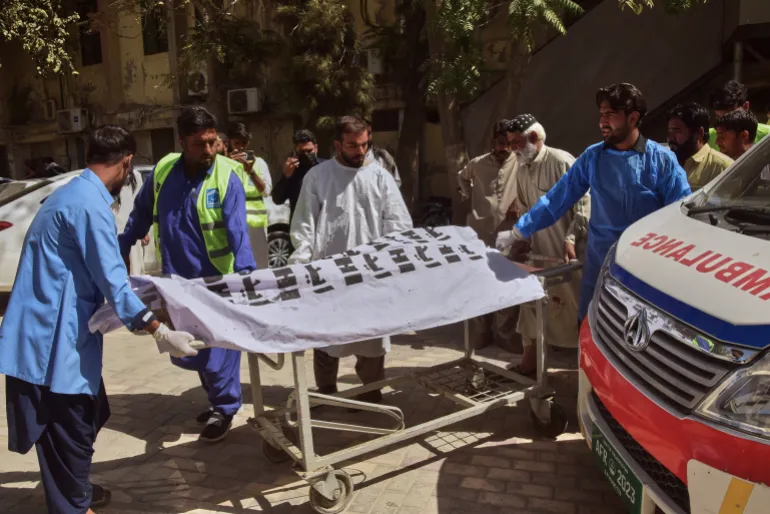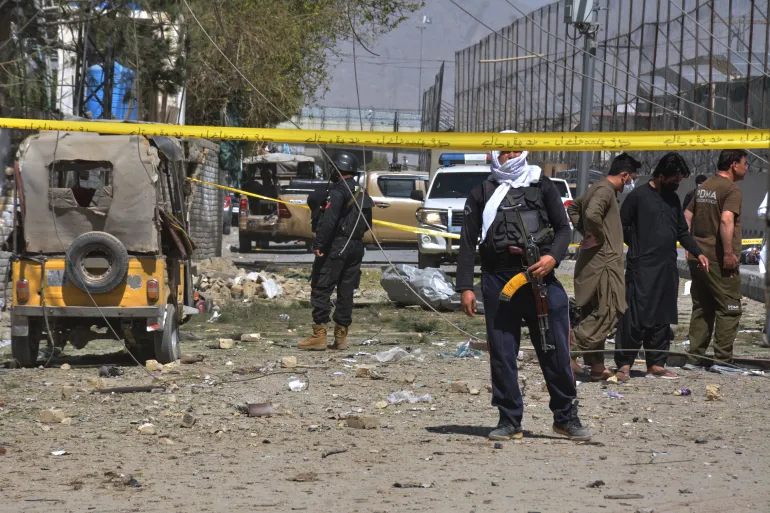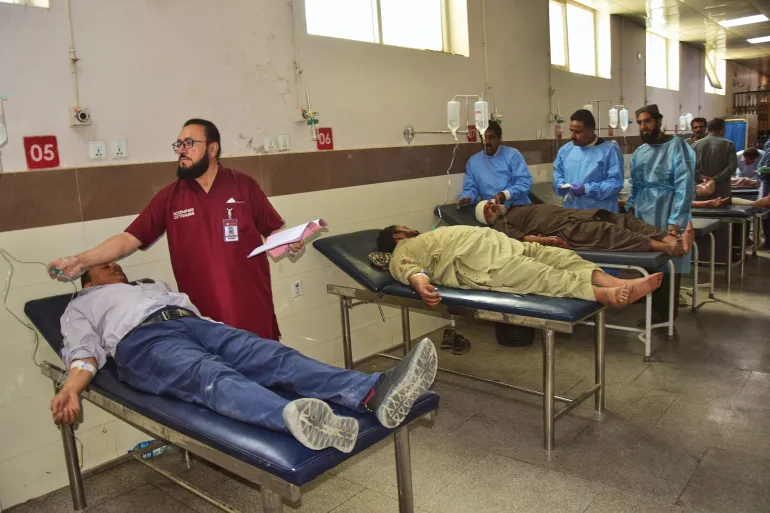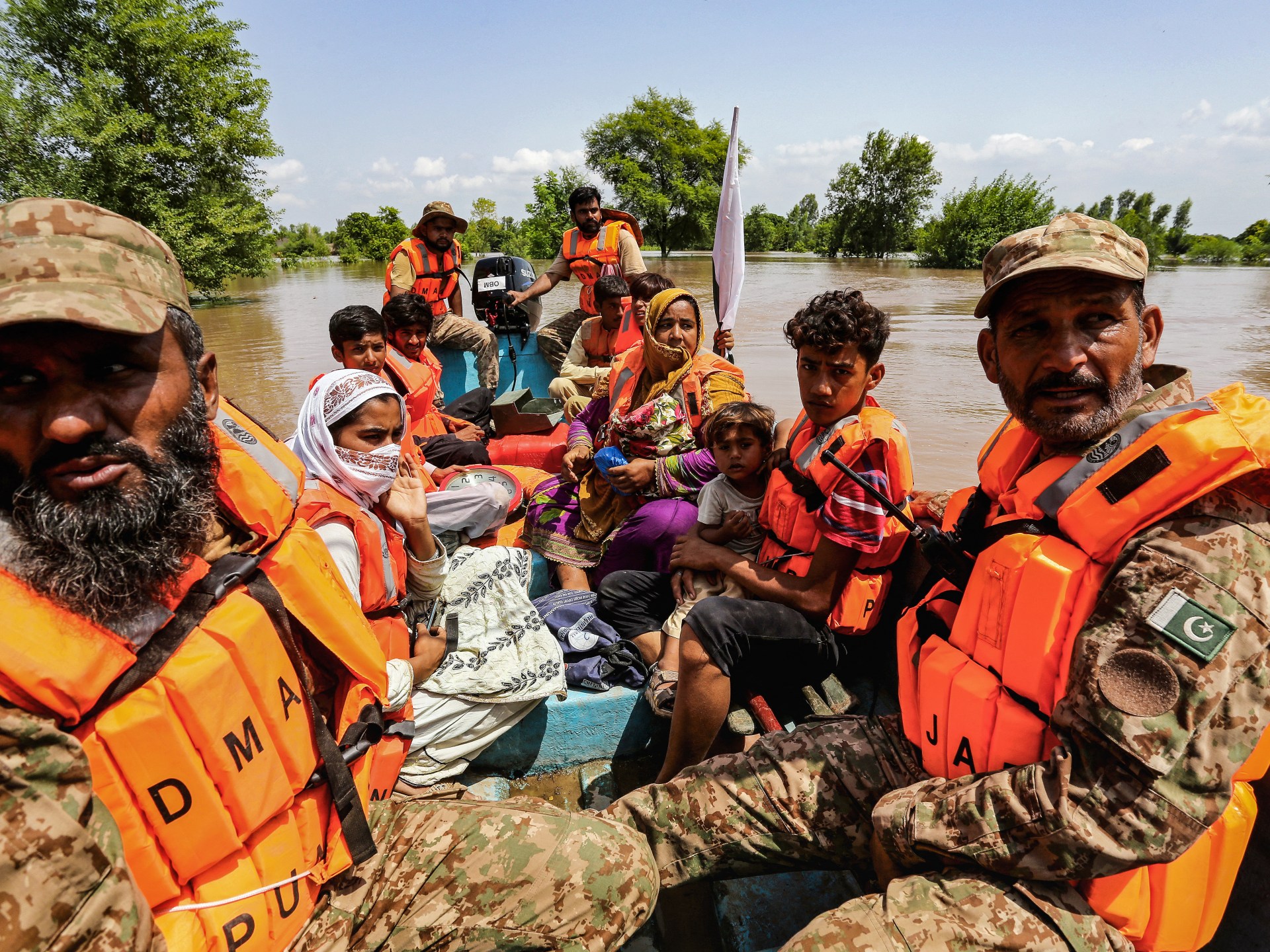How Indigenous knowledge is aiding Pakistan’s fight against climate change | Climate Crisis News
Skardu, Pakistan – When Wasiyat Khan was woken up by a loud explosion in the middle of the night, he thought “the mountains had burst” and a landslide was on its way.
Accompanied by his family, Wasiyat, a shepherd from Roshan valley of Ghizer, in northern Pakistan’s mountainous Gilgit-Baltistan region, had taken his livestock to elevated land for grazing on a sojourn during the warmer months.
Recommended Stories
list of 4 itemsend of list
Soon enough, as the family sought immediate safety, he realised the explosion was the sound of a glacier bursting. As their temporary accommodation was being swept away by the floodwaters, Wasiyat thought of the villages which lay in the water’s path.
At more than 3,000 metres in the darkness of the night, outside help was impossible to get. He immediately jumped across boulders and reached a designated spot where he could get mobile phone signals and alerted the villagers, who numbered about 300.
“Within 30 minutes, we got a call back saying the villagers had evacuated safely and no lives were lost,” Wasiyat told local media. “While they were safe, we were left with nothing, not even a matchstick to keep us warm near the glaciers. It was very cold and we were suffering.
“When we were rescued hours later and taken back to the village, we found out that all our houses and land were covered by mud, but no lives were lost.”
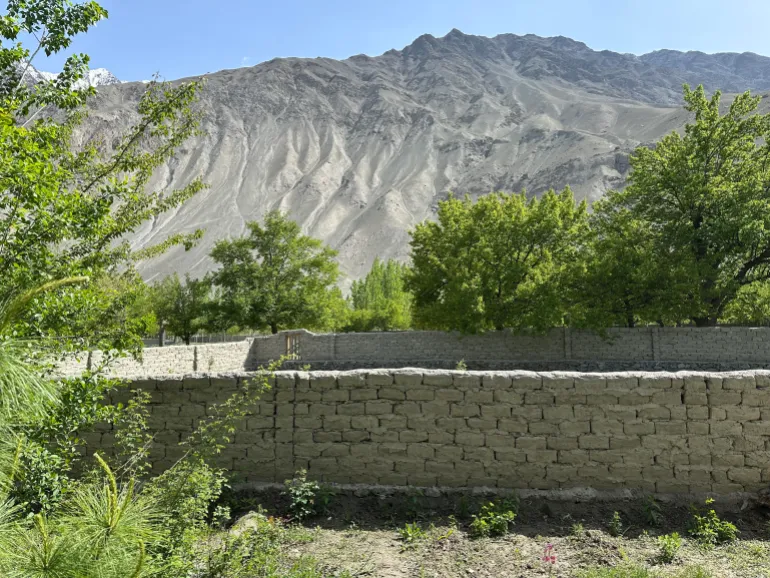
The glacial lake outburst flood (GLOF) is a common occurrence in northern Pakistan, home to an estimated 13,000 glaciers. As global warming worsens, the effect of more glaciers melting is “likely to be significant” this year, Pakistan’s disaster management authority, NDMA, had said in March.
In its latest assessment, the NDMA says snowfall across Pakistan in the coming months is projected to be less than average, particularly in areas like Gilgit-Baltistan, reducing overall snow accumulation. A reduced snow cover, it fears, would accelerate glacier retreat by exposing ice earlier in the season, making high-altitude regions more vulnerable to GLOFs.
To prevent such occurrences, the government mainly relies on its early warning systems (EWS), which help in reducing loss of life and injury, economic losses, protecting critical infrastructure, and enhancing climate resilience.
An EWS functions through an interconnected process made up of sensors and gauges that collect real-time data monitored by meteorologists and experts to not only warn of a current hazard, but also predict a disaster. Dozens of EWS sites across the most climate-vulnerable valleys in Gilgit-Baltistan and Khyber Pakhtunkhwa are currently transmitting real-time data to the Pakistan Meteorological Department.
‘Human EWS’
But residents in northern Pakistan say they are more reliant on Indigenous human knowledge instead of the EWS technology.
Mohammad Hussain, a shepherd in Gilgit-Baltistan’s Skardu Valley, told Al Jazeera about an incident when he was inside his stone hut during the summer. After nearly an hour of rainfall, he witnessed strong lightning followed by an unusual roaring sound.
As he stepped out of the hut to gather his cattle, he saw a powerful flash flood, carrying enormous boulders and uprooting large trees. Acting quickly, he alerted the villagers, which ensured safe evacuation before the floodwaters reached.
He recounted stories shared by his grandfather, who said people relied on large signal fires, gunfire or specific sound patterns to alert others. Natural signs such as sudden heavy rainfall, cloud formations, unusual animal behaviour, and distinct roaring sounds are still being used to predict flash floods in the absence of the EWS.
In one incident, he attempted to light a fire to alert villagers below, but, due to daylight and heavy rain, it was ineffective. He then fired his gun three times, a pre-agreed signal indicating danger. Villagers who heard the gunfire raised alarms through the mosque’s loudspeaker, initiating a rapid evacuation.
Although there were significant economic losses, there were no casualties, demonstrating the effectiveness of this “human EWS”.
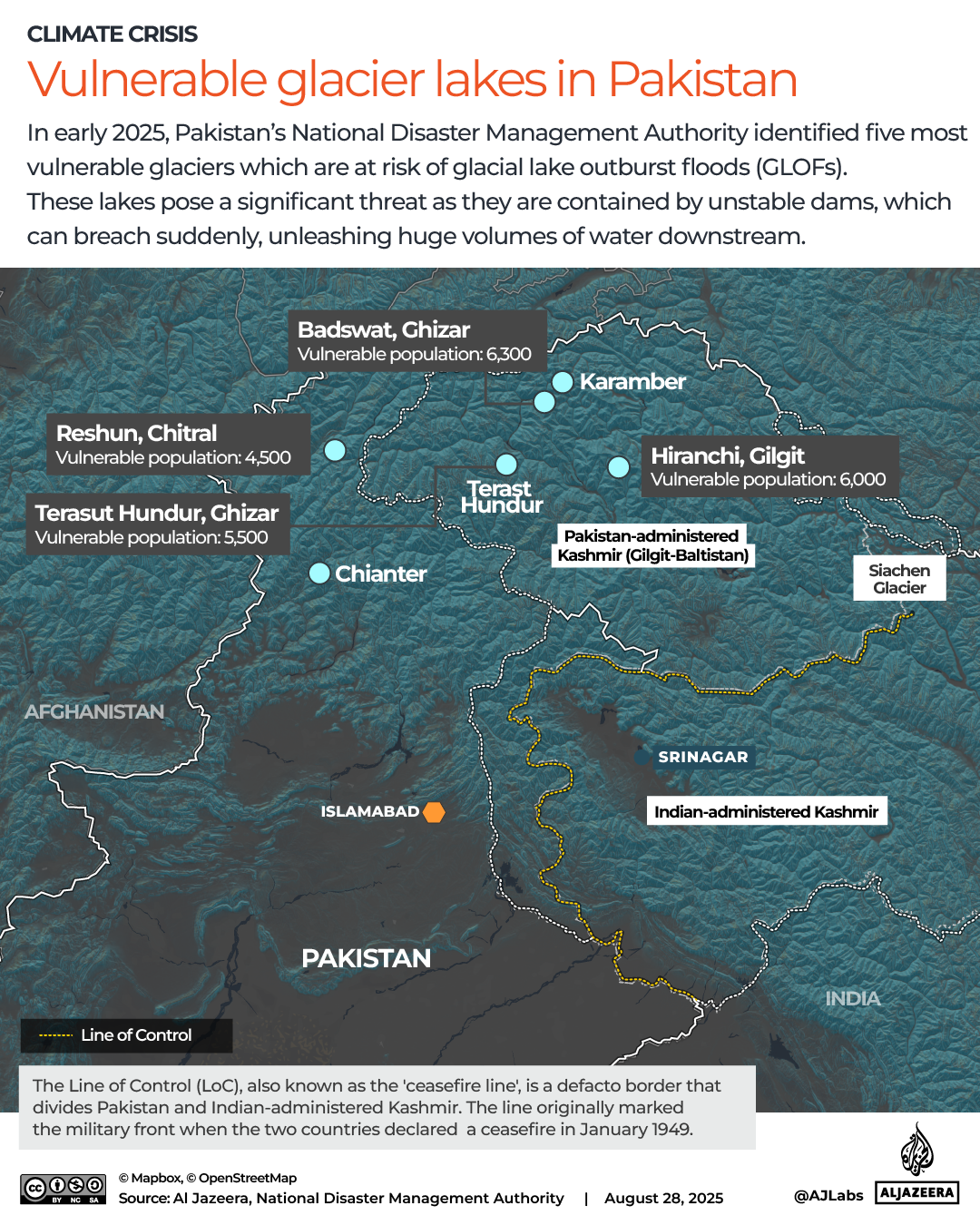
Pakistan ranks among the top 10 most climate-vulnerable nations, even though it contributes less than 1 percent of global emissions. The World Bank said in 2023 that the mean temperature in Pakistan since the 1950s has risen by 1.3 degrees Celsius (2.34 degrees Fahrenheit), which is twice as fast as the global mean change.
The country’s climate change minister, Musadiq Malik, recently told Al Jazeera that “when these [glacial] floods hit, they cause immense mortality, morbidity and widespread displacement,” adding that “it’s a harsh reality we face.” Pakistan faced nearly 90 such floods between 2019 and 2022.
‘Technology alone won’t save lives’
Despite spending millions on EWS and its implementation, there has been widespread lack of trust placed in it by a number of communities, due to frequent reports of malfunctioning of equipment and lack of follow-ups by the concerned agencies.
A report in Pakistan’s Friday Times in June this year said “despite launching the $37m GLOF-II project in 2017, with new gauges, sirens, and local training, no real-time link connects human sensors in villages to official rescue teams.”
The report warned that “technology alone won’t save lives if SOPs sit buried, rescue checklists gather dust, and trust is missing on the ground.”
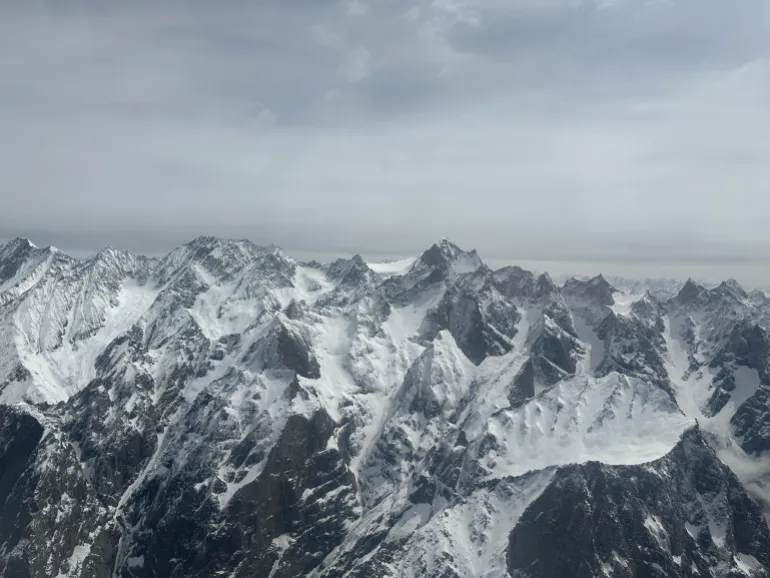
Some villagers Al Jazeera spoke to in Gilgit-Baltistan echoed that sentiment, speaking of their lack of trust in the equipment, questioning its effectiveness, and sharing concerns that these systems have not worked. They also slammed officials for falsely taking credit for the system’s effectiveness in saving lives.
“Residents say the EWS in Gilgit-Baltistan have been installed without taking the local authorities and communities into confidence, which was the reason they could not play an effective role,” Zaki Abbas, an Islamabad-based journalist who writes on climate change, told Al Jazeera.
“Last year, I was told by a local activist that up to 20 systems had been installed at various spots, but they had not been operational for different reasons. This controversy surrounding this issue had also echoed in the GB legislative assembly, with the opposition leaders in the region most recently demanding an investigation into the failure of these systems. However, no such probe was ordered.
“Their ineffectiveness can be gauged by the fact that warnings about GLOFs have come from people, most recently a shepherd whose timely call saved an entire village, instead of these systems on which billions of rupees have been spent.”
Addressing the challenges remains a task for the government and partners involved in the implementation of EWS. The UNDP said in February this year that “limited financial resources, technical capacity, data gaps and uncertainties, communication barriers, weak institutional capacities, and complex and evolving climate risks” are just some of the issues facing EWS globally.
When Wasiyat and two other shepherds from Ghizer were given $28,000 each in August by Pakistan’s prime minister as rewards for saving hundreds of lives, they were told that “this act of courage and responsibility will be written in golden words.”
As unpredictable rains, snow patterns and melting glaciers continue to affect Pakistan, especially the northern areas, it seems residents are more likely to rely on these “heroes” in the absence of widespread EWS and the community’s trust in them.
This story was produced in partnership with the Pulitzer Center.


